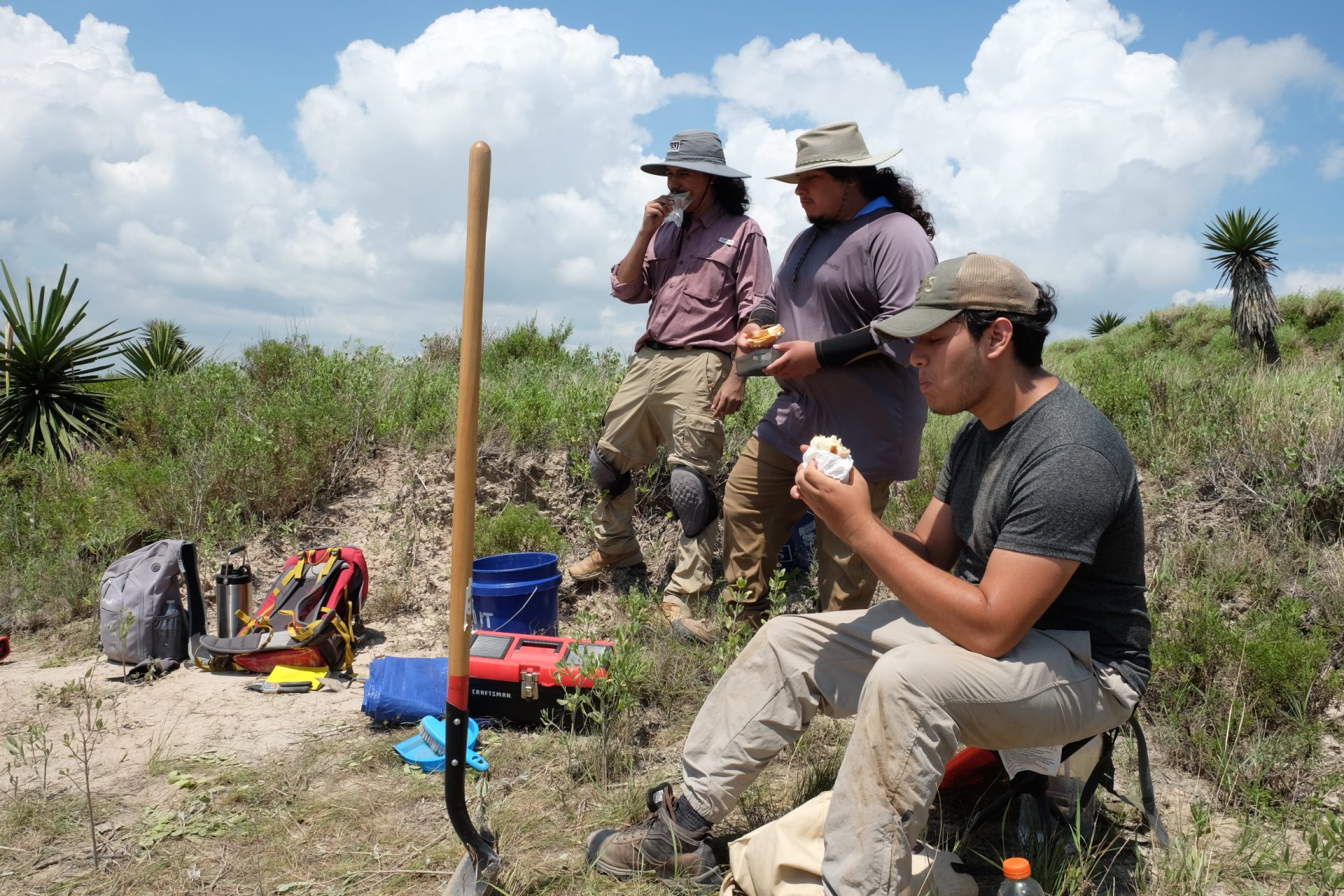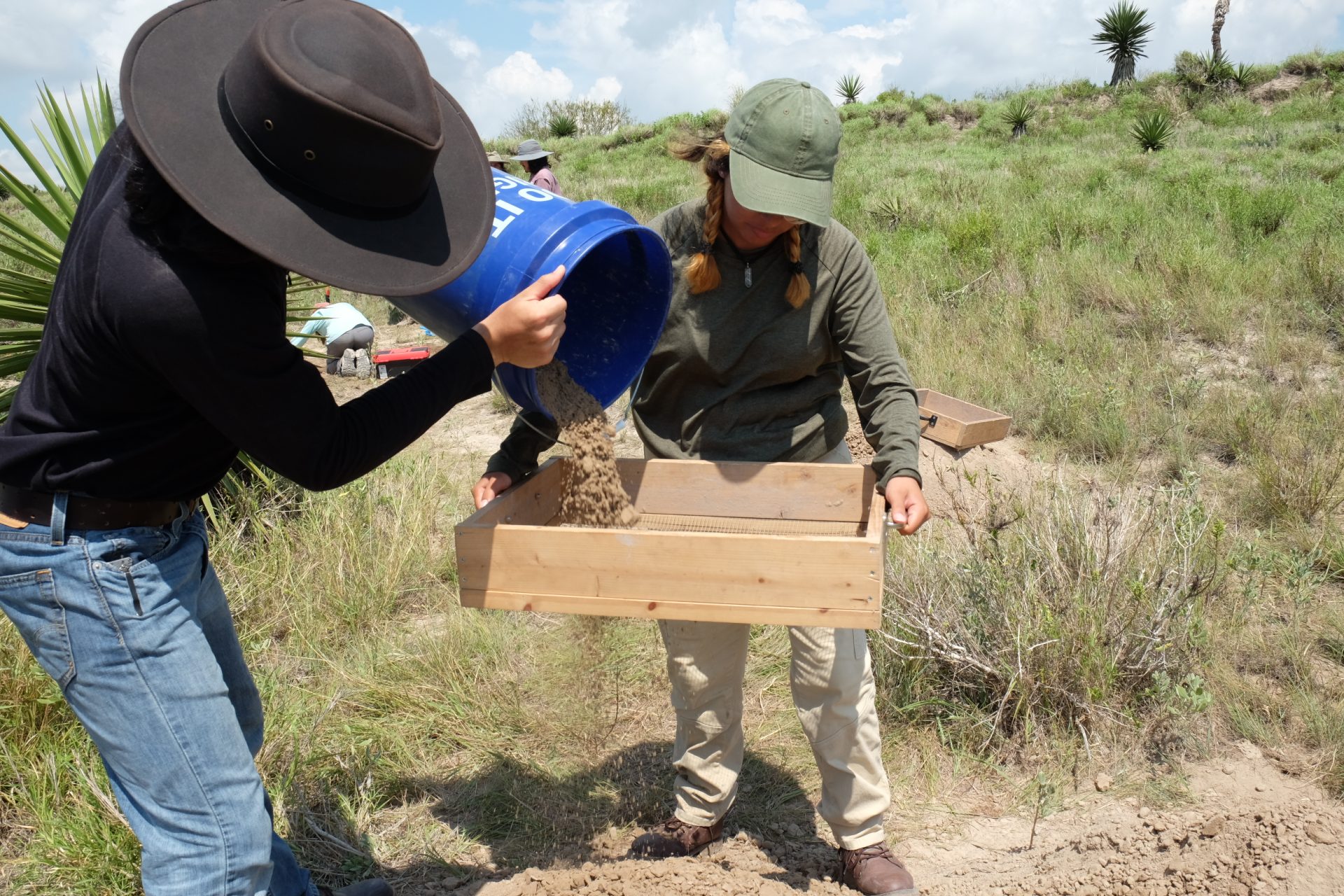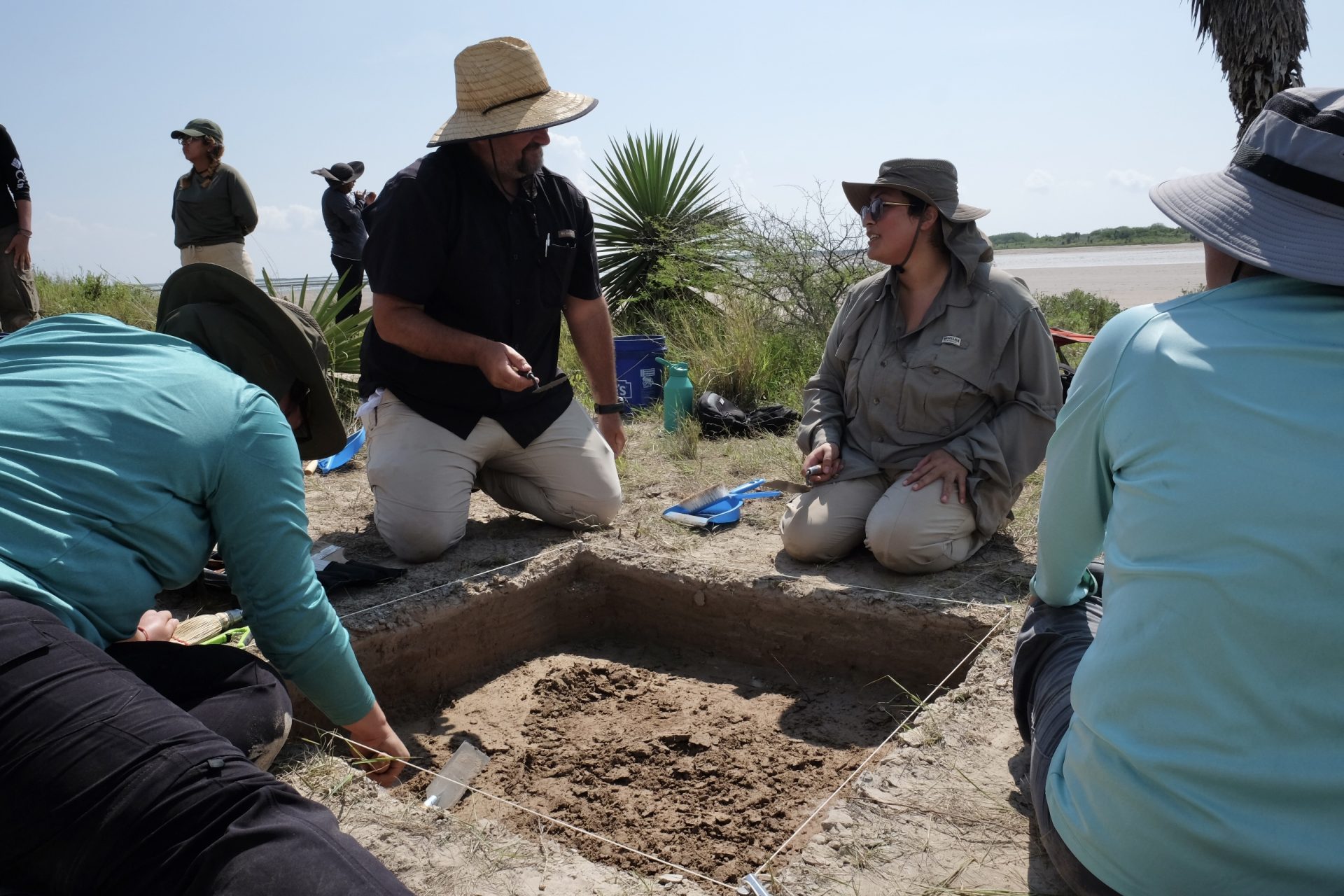|
Only have a minute? Listen instead
Getting your Trinity Audio player ready...
|
NEAR LOS FRESNOS — For most of June, UTRGV anthropology students led by Assistant Anthropology Professor Edward Gonzalez-Tennant embarked on a one-of-a-kind archaeological field study here in the Laguna Atascosa, marking the first in the area in about a century.
Having a field school every summer, Gonzalez-Tennant said he received a five-and-half-year permit from the U.S Fish and Wildlife Service to conduct a long-term archaeological project at the Laguna Atascosa to give students an opportunity to do some hands-on research.
The Laguna Atascosa National Wildlife Refuge was established in 1946 and is the largest protected area of natural habitat left in the Rio Grande Valley. The refuge is about 120,000 acres and is located almost entirely in Cameron County.
Laguna Atascosa has a portion open to the public for and is a premiere bird-watching destination which features 417 species of birds, 45 mammals, 44 kinds of reptiles, 130 butterflies and 450 plant species.
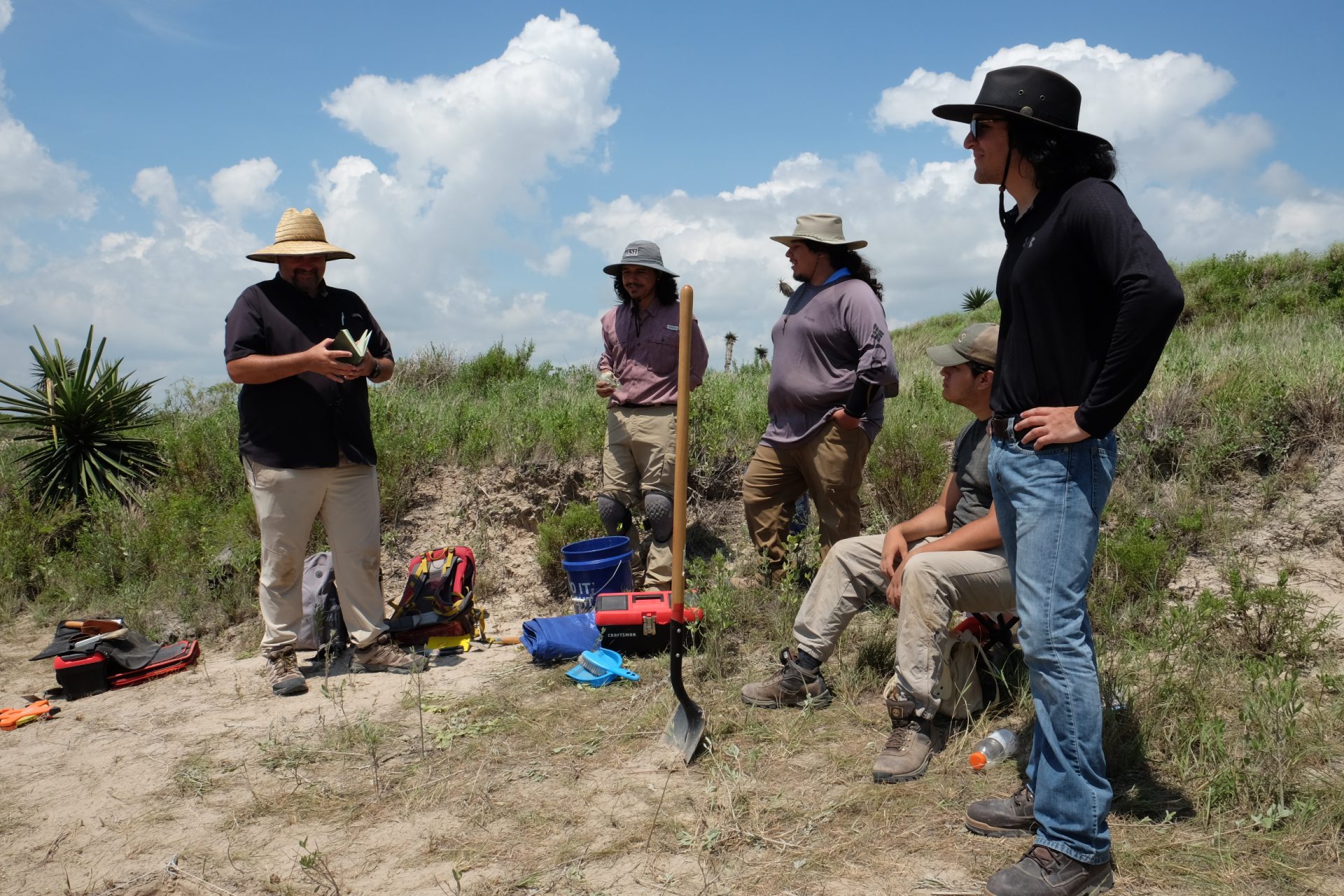
Invited to visit the field study on Thursday, June 27, Gonzalez-Tennant picked up The Monitor at the visitors center and rode about 6 miles into the refuge where the dirt road ends and is off limits to the general public.
Just the drive heading toward the research area, the biodiversity of the area shows with sightings of various plants, birds and a couple of nilgai, a large antelope that is originally from Asia but introduced in the Valley in the early 19th century.
With the temperature being a couple of degrees cooler and getting some ocean breeze, it was still dangerously hot. Gonzalez-Tennant said he recommends his students to dress for the heat and drink about 3 liters of water.
About 12 students joined in the field study this summer from June 3 to June 28. Ten students are from UTRGV and hail from Edinburg to Brownsville with two students are from California State University Northridge.
Gonzalez-Tennant said the students learned about the field school through an online flier and a friend that is a professor at the university recommended the students to participate in the program.
With students working various projects during their time on the field study, every student had multiple chances to do every aspect of an archaeological dig from the digging, flattening the dig, screening the dirt and even cleaning up and filling the holes back in.
“The students’ primary interest seems to be that they want to be professional archeologists,” he said. “They don’t want to be academics. So many of them are looking for topics that they can do a master’s thesis on and obviously it’s nice if you can start getting familiar with that as an undergrad.”
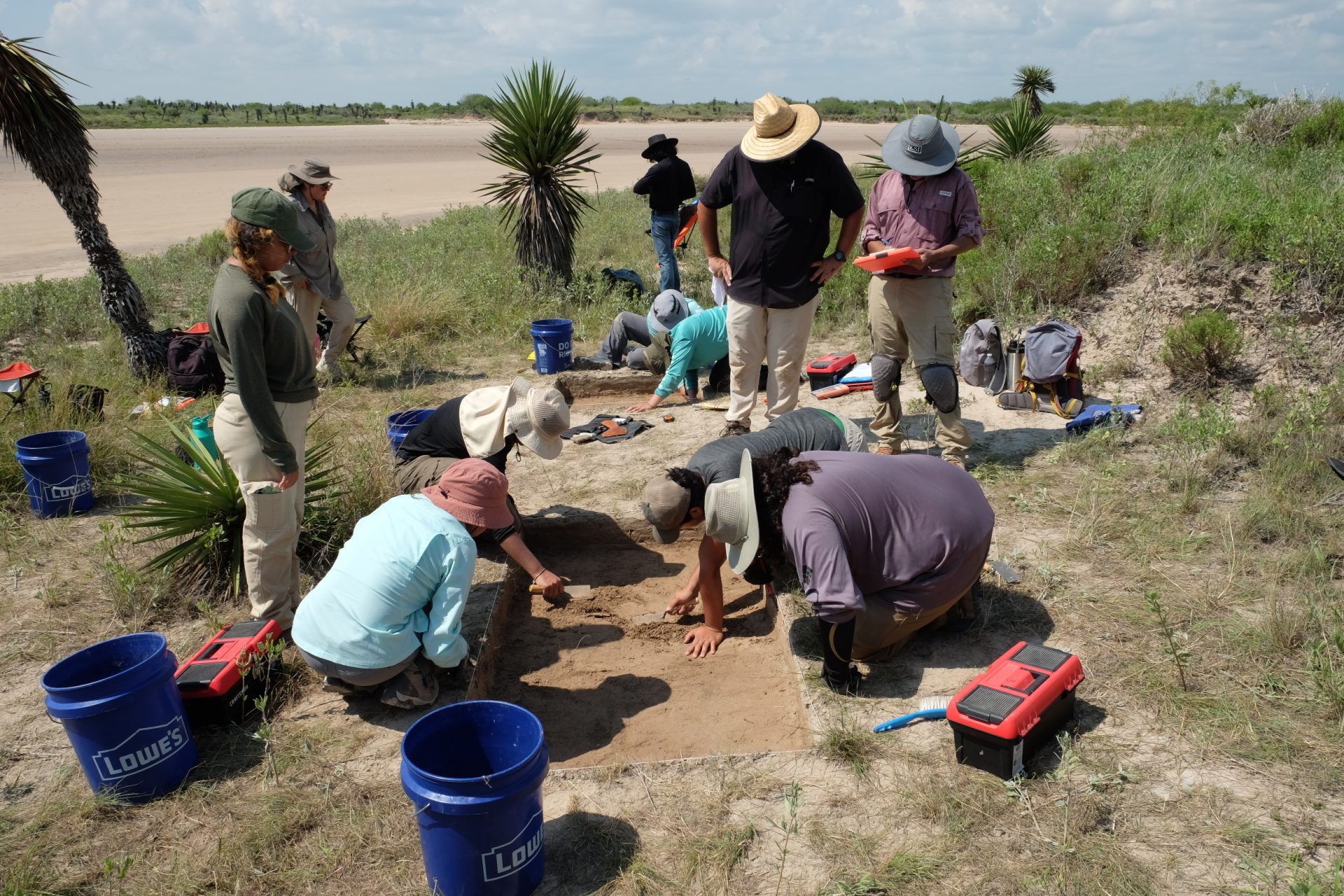
Gonzalez-Tennant said with the area being extremely understudied, it is a hidden gem for an archaeologist.
“As an archeologist, there’s very few places in the world where you can come out and you know, you might be only the third, the fourth, or the fifth or sixth archeologist to ever visit this area,” he said.
He added a digging of the area occurred back in the 1930s but no one has returned to it since then.
“We might be the first archeologist to return to this area in a century,” Gonzalez-Tennant said. “There’s a lot of sites like that around here. A lot of sites that may have been recorded and/or visited 50 or 100 years ago, and that was it.”
To find what parts of the vast area to examine, he said they as a group walk transects.
“That’s where we get into a line, and we kind of walk the landscape and are trying to chart what appears on the surface,” Gonzalez-Tennant said. “So artifacts distributed across the surface can be indicative of other things, like nearby sites or even buried artifacts that haven’t come to the surface. But understanding the dynamic nature of this environment and how that impacts archeological sites, that’s not been well-studied either.”
Dividing the students into groups of three with two groups working on execution sites and the third one screening the dirt dug out, everyone was hard at work doing what they have done for over a summer long in the South Texas heat.
One of the students in the field study is UTRGV junior Klarissa Garcia who changed her career path to become an archaeologist after taking a class with Gonzalez-Tennant.
“It’s been a lot of fun. It’s just a little hot, that’s it,” the Weslaco native said.
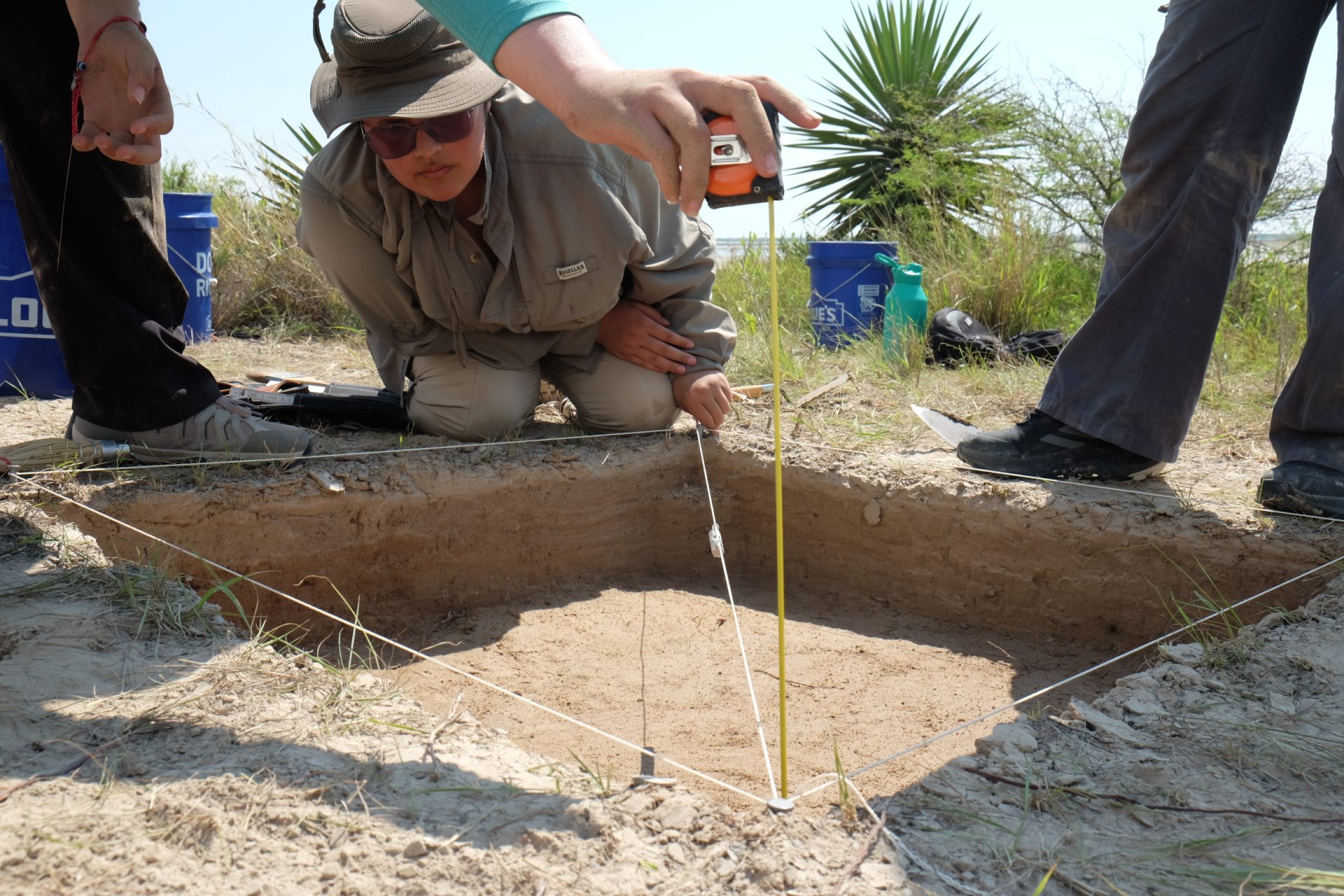
With most students staying over the course of the month at a house near the site, Garcia commutes every day from Weslaco to be part of the field study.
Along with UTRGV graduate student Aracely Balderas and undergraduate Alexa Serna, the team of three dug a hole or referred to as a unit about 20 centimeters deep with the goal of digging to 30 centimeters by the end of the day.
“We have seen some rust,” Serna said. which could possibly mean there is a historic event but “we might not know.”
With the dirt that is dug out, another team of students gets that dirt and screens it through a tool to see if there is an artifact that went unnoticed or any material.
That station consisted of post baccalaureate student Brandon Uribe, UTRGV sophomore Sophia Olbera and the two students from California, Diana Gutierrez and Roberto Moran.
Wanting to gain additional experience and especially in a new area, the California students said they learned a lot about the whole process and also enjoyed having a Frito pie for the first time, a South Texas delicacy.
For many it was their first experience participating in an archaeological dig and over the course of a month, the students built a camaraderie all for their love of digging and trying to understand the past.
Uribe is entering the Nautical Archaeology graduate program at Texas A&M and said he wanted to pursue archeology because he is fascinated by the historical and physical aspect of the work.
“I find it very appealing, interesting and very rewarding when you stumble upon something,” he said. “It’s kind of reaching into the unknown and trying to make something out of it.”
Olbera, also pursuing archeology due to her fascination with history and culture had one other humanly simple reason why she loves what she studies.
“A simple reason, but I just like digging holes,” she said laughingly.
With the dig site on June 27 not producing any artifacts, Gonzalez-Tennant said the group focused on looking at the formation of the dunes itself to better understand how prehistoric indigenous groups may have used the area.
The group did find artifacts in several places in the refuge, indicating more sites than previously thought exist in the area.
“We found a nice mix of lithics, stone tools, both dart points and arrow points and dart spear points and of course arrowheads,” he said. “Between the two areas (we explored) we found … litchis spanning several thousands of years.”
The professor said the stone tools were made and used by people 4,000-5,000 years ago or more, with some maybe being made and used as recently as a few hundred years ago.
“It’s a nice record of just how long people have been using this environment, basically since it started forming 4,000 to 5,000 years ago,” he said. “Because the lagoons, South Padre Island … they all date to the last 4,500 thousand or so years, basically, when modern sea levels stabilized, these environments started forming.”
Planning to come back every summer for at least a few more years, Gonzalez-Tennant will study the area to see what parts of the refuge he will take students to next year to unearth stories from the past.


